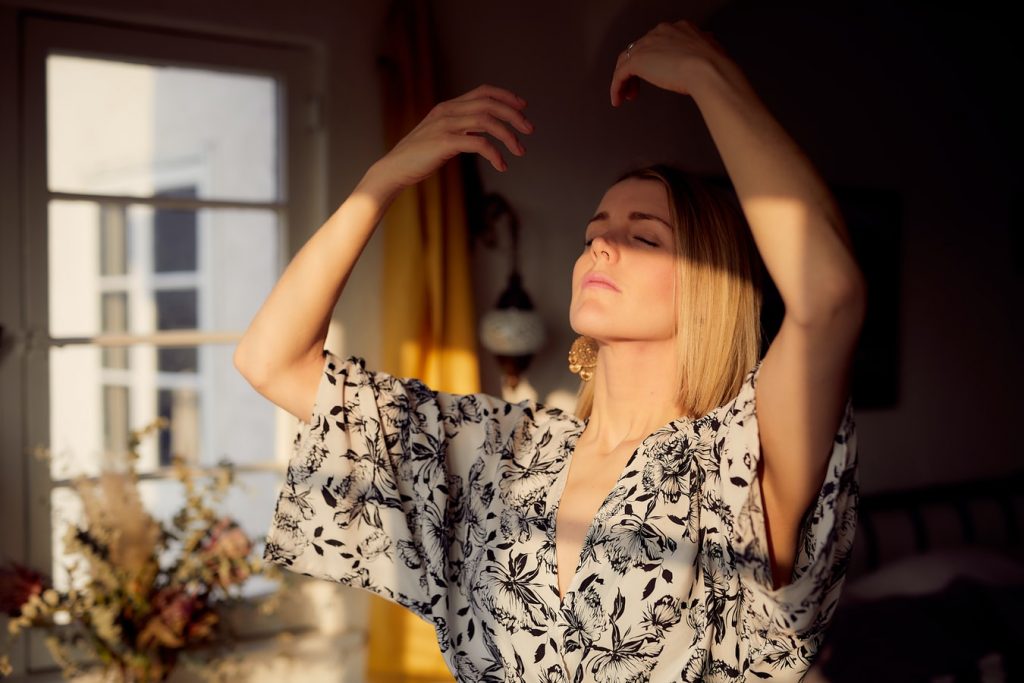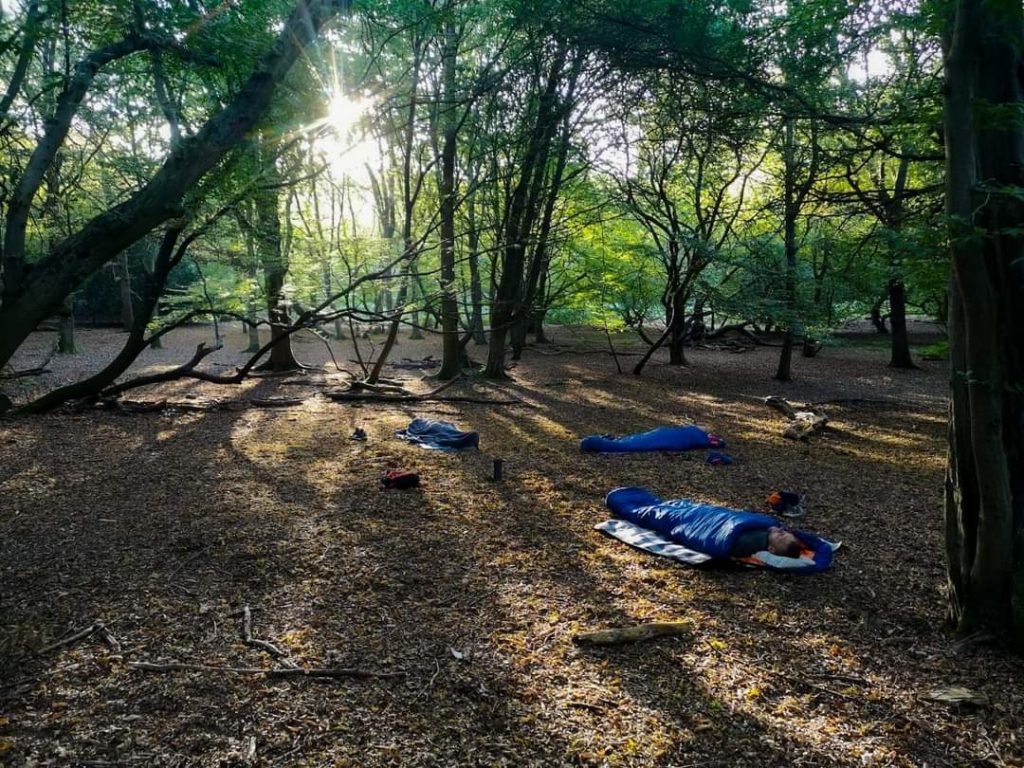When we feel anxious or depressed, our minds tend to be occupied with thoughts or images about either the past or future. But living in our heads so much, often makes us skip the most important and only available moment — the here and now.
Yet if your mind is already riddled with thoughts, you can hardly think your way out of it. Trying to ruminate less by telling yourself to do so is a bit like fighting fire with fire.
Since breathing ties us to the present moment and is the foundational element of many practices such as yoga or meditation. Today we will explore one more dedicated technique: breathwork.
We breathe in and out in a constant rhythm every day, yet we tend to overlook its power. Becoming present by focussing on something as simple as breathing can help your entire system recuperate.

The practice of breathwork might seem very straightforward, but there are different techniques with a depth of methodology behind each one. In this post, Aivaras Virbašius, a London-based breathwork practitioner, gives us an introduction to the topic.
VP: What was your journey into breathwork?
Aivaras: My past was rather colourful. I was born in Marijampolė, but from four years old until my adolescence, I lived in a district close to Kaunas called Karmėlava.
While growing up, I was very passionate about basketball, which occupied all of my time back then. But with my teen years came other activities and temptations and it’s the period I mainly refer to when I say that my life was vivid and eventful.
Since my environment wasn’t the purest, my path exposed me to a lot of unsavoury things, from theft and drugs to fights. You name it. The criminal world simply sucked me in. All these shady activities lasted until my family and I settled in England and my wife gave birth.
Then I told to myself: while my kids grow up, I’ll grow up with them. This was the start of the new chapter of my life. I believe there was a reason why I went through everything I did. All the ups and downs. They led me to discover my mission in life and desire to help people.
VP: What was the turning point where you decided to dedicate your life to breathwork?
Aivaras: I was still a complete beginner on the path to self-discovery. I was contemplating what I could give back to people and my purpose in life.
One day, my wife asked me if becoming a breathwork specialist is something I would like to pursue. She had asked me something similar before, but this time, I knew the answer instantly. I took that as a good sign in itself.

As simple as it sounds, this is how my path to breathwork began and it still continues. I say so because whenever I complete one course, I’m already signed up for another. I test what I’ve learnt and put it into practice.
For me, breathing was this undiscovered treasure sitting right in front of my nose, quite literally. I never would have thought that practising it would fundamentally change my life. Only five years ago, if anyone had asked me the same question, the answer would have been different.
VP: Can you briefly introduce us to different forms of breathwork?
Aivaras: To describe all the breathing techniques out there with all their exercises and methodologies would be an endless quest. For starters, all breathing techniques are generally classified into two categories, one of which is Pranayama.
The second group includes breathing techniques such as holotropic, rebirthing, and Wim Hof methods. Soma Breathing is the type of breathing that encompasses features of both above-mentioned categories.
Pranayama
In Sanskrit, Prana means breathing and Yama means control. Pranayama is a series of breathing techniques, each with a different therapeutic effect that is said to work by controlling the energy of our body.
Through Pranayama practices, we learn how to realize this pranic energy and how to use it to benefit our mind, body, and soul. In other words, maintaining the balance of all three.
There are many different types of Pranayama exercises, but therapeutic breathing techniques focus on the 7 basic exercises that have the most practical benefits in everyday life. They are also backed by scientific evidence-based research.
7 types of Pranayama
Omkar
Anulom Vilom
Bhastrika
Kapalphati
Kumbhaka
Ujjayi
Kaki Mudra
Breathing techniques such as Rebirthing or Holotropic are very similar in that they use active inhalations and passive exhalations, with no gaps between inhalations and exhalations. Some of the differences between them are that during a holotropic session, dramatic music is used in the background and the Mandala is drawn at the end of the practice.
Another method that has gained recognition over the past decade is the Wim Hof Method. This breathing method became very popular when the founder, Wim Hof, otherwise known as the Ice Man, broke one record after another surpassing human abilities.
While enduring extreme conditions, such as exposing his full-body to cold and ice, when all he did is use his breath. Wim was not only able to control his body temperature but also the autonomic nervous system, and among other factors.
By scientifically proving this method, he was able to pass it on to others and thus bring together a superb community of people. During the Wim Hof method, a sequence of 20-30 inhalations and exhalations is performed, after which a person enters the air retention phase, which is not the case in holotropic and rebirthing breathing. This sequence is repeated from 2 to 3 rounds.
Soma Therapeutic Breathing is a unique breathing technique, which fills the holistic respiratory system. The basis of Soma therapeutic breathing comprises scientifically-basked parts of Pranayama, which are used in a certain sequence. This helps to achieve euphoric states and brings other benefits, for example, reducing the levels of stress or fatigue.
VP: Which technique do you practice?
Aivaras: That depends on what I need or want at the time. Sometimes if I lack energy I do Soma Energizing breathing. But if I want to generate ideas, release tension, raise vibrations, then I do so-called Soma Awakening practices.

These practices are combined with the movement of pranayama and euphoric music. By doing these unique breathing meditations, I benefit at all levels: physical, mental, and spiritual.
VP: What changes do you personally achieve through breathwork?
Aivaras: After a breathing session, you can receive results such as raising your vibration, increased energy and motivation; flow states, deep relaxation, and stress release.
Results I have achieved through regular practice: high cardiac variability, improved digestion, calm nervous system, increased stamina, strengthened immune system, and a sharper mind. There might also be unique spiritual experiences such as visions and sensations of various forms.
VP: How does breathwork benefit our minds and bodies?
Aivaras: On a mental level, it sharpens you, helps you to know your soul anew; balances your emotional state; reprograms your thinking, and raises you to a higher level of awareness. Often, as a result, breathwork practice helps turn one’s desires into reality and create levels of contentment or even joy.
On a physical level, it balances the nervous system, strengthens the immune system, lowers blood pressure, regulates heart rate, improves sleep quality, and strengthens endurance. It is proven that breathwork can even activate stem cells, as well as produce and regenerate cells.
Some of the above-mentioned benefits can be achieved instantly, some through regular and long-term practice.
VP: Are there any beginner mistakes one can avoid?
Aivaras: For starters, follow these steps:
- Perform breathing exercises in rooms where you can fully relax and observe your breathing.
- Be sure to ask for breathing session instructions and all possible contraindications before you start.
- 20-30 minutes after the session, devote the time to self-analysis, reflection, and being in solitude.
- It’s a good idea to keep a “breathing” diary.
VP: What resources would you recommend to people who want to get started?
Aivaras: There are quite a few books you can start with, including Dan Brulé – Just Breath; Richie Bostock – Exhale; Sasha Yakovleba – Breath to Heal; Joe Dispenza – Supernatural; Dr. Prakash Malshe – A medical Understanding of Yoga, and Yogi Ramachraka – The Science of Breath.
For visual learners I recommend, I would recommend introductory videos such as the Shamanic Roots of Yoga, the movie “Heal”, and Joe Dispenza’s movie called Mindmovie + Kaleidoscope. Lastly, here’s an informative article about all the different breathing techniques.
VP: Where can we find you in the digital sphere?
Aivaras: There are a few places, one is on via Facebook page: ThrivingSoulTribe, my personal account Aivaras Virbasius, or a private group “Kvėpavimo meditation” (Breathing meditation).
VP: Thank you, Aivaras, for sharing your story, knowledge, and recommendations with us.






